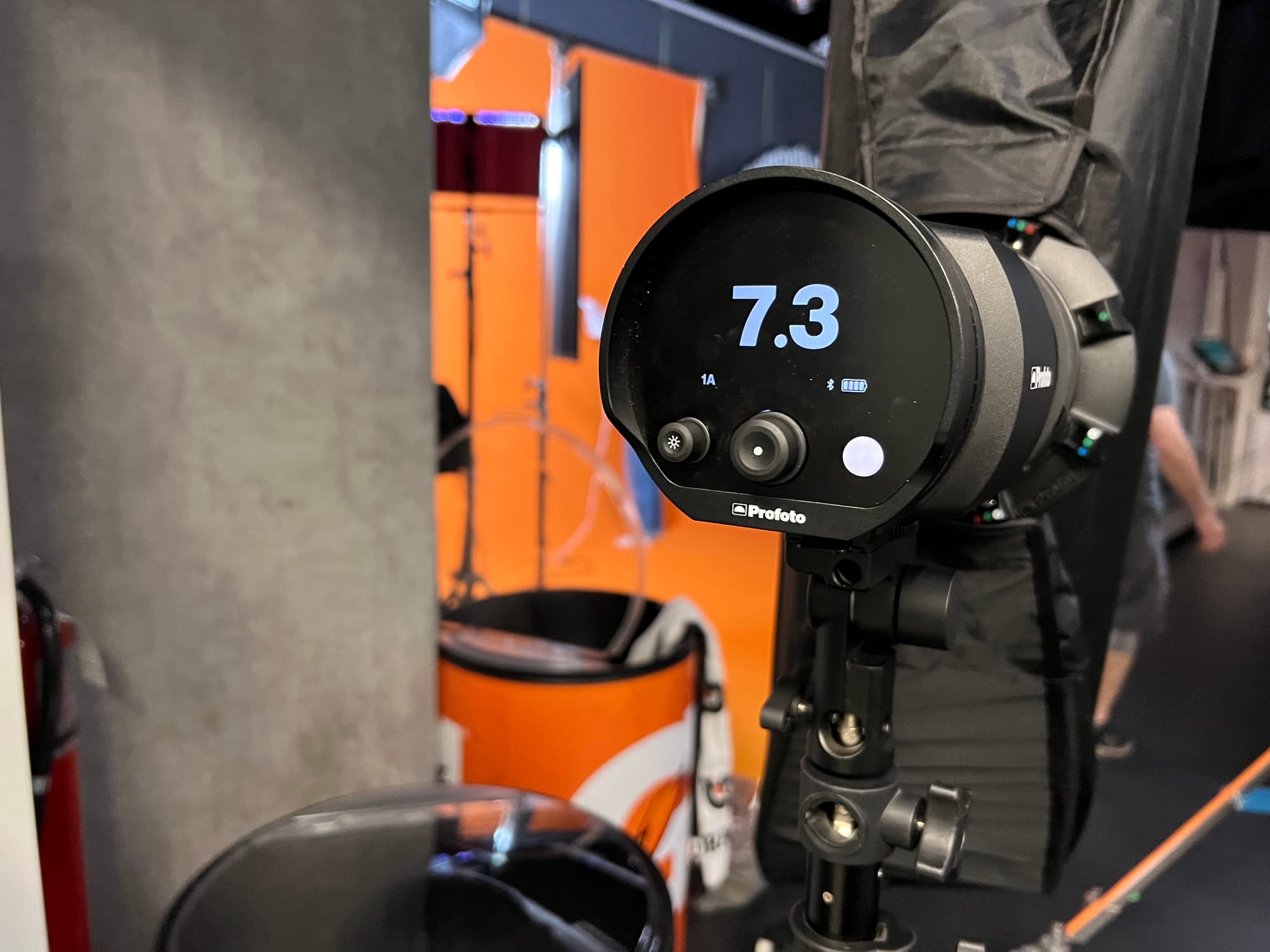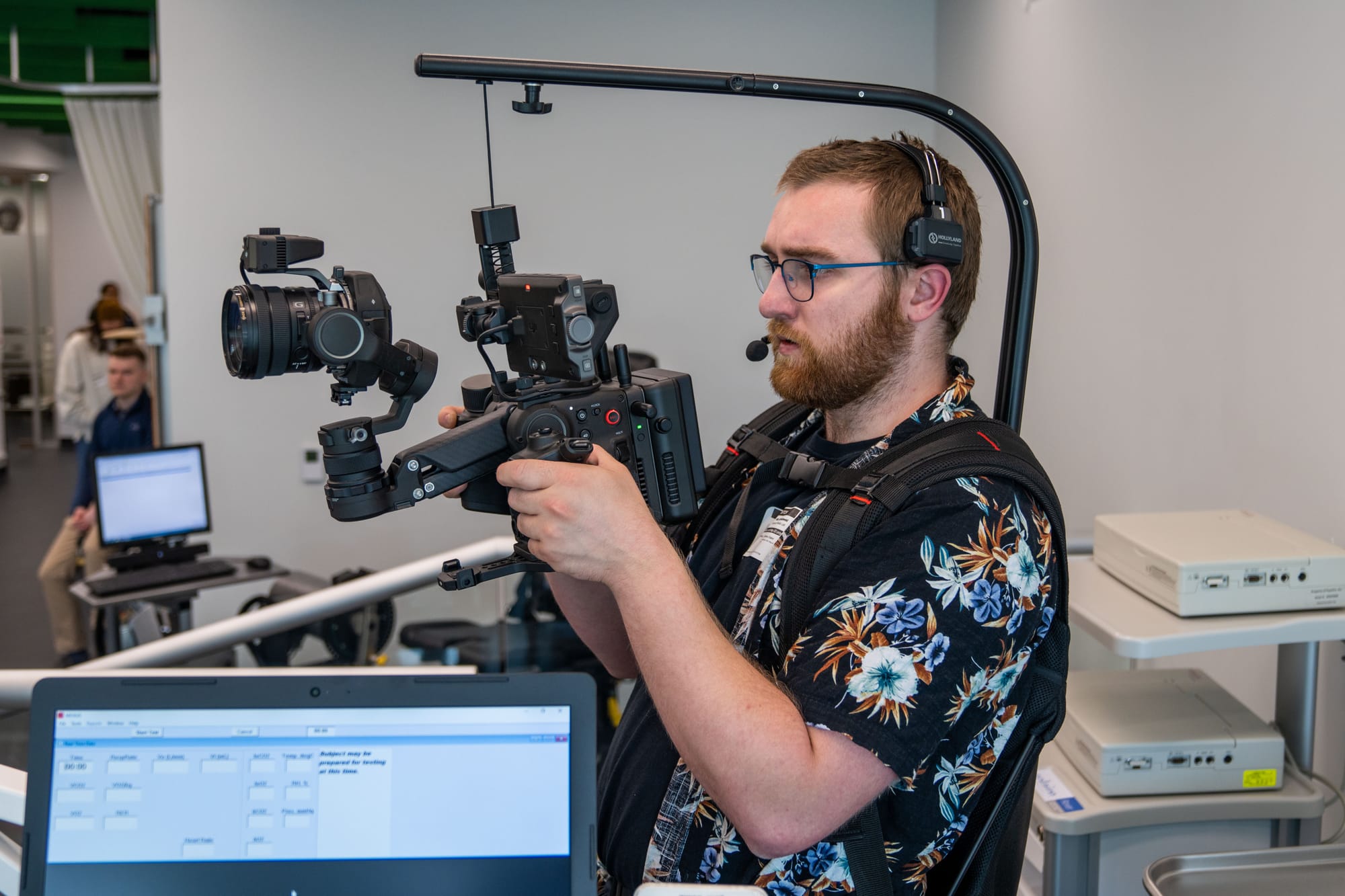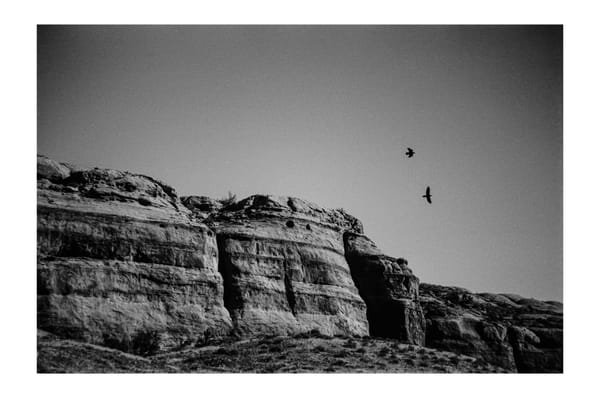Filming a High-Profile Athlete Shoot

How to plan to capture so much in so little time, and seem like the calmest person in the chaos.
In the end of my days, when you come to lay flowers on my gravesite, I would like you for a moment to ponder the words upon my gravestone.
Nick Stan: Cinematographer. Died from stress related to needing to capture too much in too little time. #REDTilTheEnd
Athlete shoots are stressful. They have multiple deliverables with a high profile subject who has limited time. You need to capture action, but the action has to be controlled and smart so that the professional athlete doesn't hurt themselves on your set. And on top of that, there will be multiple moments where you have to tell this highly accomplished athlete, who dropped thirty points last night and just got off a casual phone call with other NBA legends, how to hold a bottle so that we can see the label.
The reason I'm writing this to you today is because I want this moment to be less stressful. I'd like the entire experience of capturing such a shoot to be less stressful. I'd like you to be successful, called back, and to work with athletes again and again to the point where they know you. I'd like you to be less nervous, more controlled, and at the end of the day, to have fun in this wild world of filmmaking.
So I'm breaking this into 3 tips about how to plan a shoot with an athlete, because the majority of your success will come in preproduction, and the rest of your success will be executing or calmly adapting your plan. And when you have one hour to capture two hours worth of content, with five concepts in various attire and capture photos on top of that to boot, it helps to go in with a plan. Let's get into it.
Filming Athletes Tip #1: Build sets that are always ready to go
One of the things you learn quickly about working with high profile people of any sort is that they are busy; time is limited, and here they are, using some of their finite free time to spend with you. And even though they are getting paid by XX company to be there, none of us like showing up to something on our day off. So the name of the game is to make the shoot feel like it is worth their time. Do that, and you'll not only get their respect, but you'll also get better performances, better rapport, and better energy.
The best way to accomplish this is to cut out all time where the athlete is doing nothing. And by nothing, I mean time where the athlete is waiting around for the team to get set, for lighting to be finalized, and for the camera to be in position. All time that the athlete is doing nothing is wasted time.
To accomplish this, we often have multiple sets that are all set & ready to go, or at least quickly adaptable. For example, on two recent shoots we were on, we had a sweep set up for some lines to capture on white, and then separate lighting set up and ready to go on the field. We had planned the locations out so that we never had to move major equipment, and any lighting tweaks we had to do we were able to accomplish with one light or one neg fill. We bring enough equipment that we don't have to move lights from set to set, and anything we have to move (i.e. client monitors, camera cart) is on wheels.
What happens if you don't have the budget for multiples of lights? Well, we get scrappy and ask for more time in our set up. This allows us time so we are able to have the set built & tested, all so we can put placeholder stands and/or tape down marks for equipment to go to, and built back down for our first set up.
Efficiency is an under appreciated mark of excellence on film sets, as an efficient set is the best way to save time and capture more. And on these athlete shoots, saving five minutes can be the difference between success and failure.

Filming Athletes Tip #2: Transitions are make & break moments. Practice them.
Now that you have multiple sets, how do you transition between them? And how do you utilize all of that time during that transition?
When I was first starting out, the transition from one set to another has often been the time killer due to mistakes—in the movement and chaos of bodies and things, critical items often get left behind; miscommunications from shifting priorities arise to create trouble; the slowest walkers get exposed as others check their watches. All of it—time. Time when the camera could have been rolling.
That time during the transition is one of the most critical points to define with all of your crew members. Everyone needs to know exactly what they are bringing with them during the transition, what they are doing, and how long it should take to get there. And you should have a moment in the day to practice that transition (and to time it), so that it can go flawlessly.
I know I may seem crazy for telling you to practice moving things from point A to point B, but trust me when I say that you'll only make that mistake of not practicing your transition once.
Case in point: we have a moment on set where we are filming on a white sweep indoors before transitioning to an outdoor location a five minute walk away. During that transition, a cam op forgot their ND filter, and what turned into a five minute transition became a ten minute transition, and five minutes of wasted time. It was from this point on that we always practiced our transitions.
Your transitions are your make and break moments. By getting everyone on the same page, you'll end up saving time by not losing any time. That's film math.
Bonus Tip: What does the athlete do during that transition time? The transition time is the best time to brief the athlete on the next concept, give a small walkthrough of the things to come, or to get a chance to get a drink or fix by HMU. What we often do is have the athlete break for one minute for water & HMU to give the rest of the crew a headstart to the next location so that the athlete shows up and everyone is ready to go.
Filming Athletes Tip #3: The Decision Makers should make the schedule
This seems like an odd one, because the role of a 1st AD and line producer is to make and approve the schedule. But when you are on a set that is tight on time and heavy on content to be captured, making sure everyone understands the schedule and the ramifications of not sticking to the schedule makes life better for all involved.
What do I mean by this? I mean that the DP should sign off on how long it will take to capture concepts, along with the director to understand time needs. The person on set managing communications between the client and the crew should sign off on the schedule and know it like the back of their hand. And everyone on the crew should have a working understanding of the schedule and where they need to be when.
This seems like a lot, but what we are trying to do is protect the shoot by putting multiple viewpoints together to align on one common understanding of the schedule.
Every single person has a perception of time that is different than your own. What a director thinks takes five minutes a DP might know takes ten minutes. It's the whole reason why special ops synchronized their watches. To be on a common understanding of time.
Why is this important? Because when things change, you want everyone to be able to problem solve and understand the ramifications of their solution.
And things will change on the shoot. Sometimes the athlete will not want to do an action because they are sore, so you have to rethink some shots. Sometimes the athlete will take a 15 minute call on set. Sometimes the athlete may just show up a little late, or need to leave earlier than expected. This has happened and will happen and will continue to happen; but being prepared and understanding the schedule deeply will help everyone adapt to the problem, versus succumbing to the problem.
Three Tips: Now what?
- Run your client through the set step by step so they understand why you made the decisions
- Make sure everyone knows the creative to back stop everyone else
- Everyone should hydrate during set up, and take 5 minutes to hydrate before the athlete arrives
You will run into situations where you will have a lot to shoot, and not a lot of time. But follow these tips and you will win. Or at least not die.




